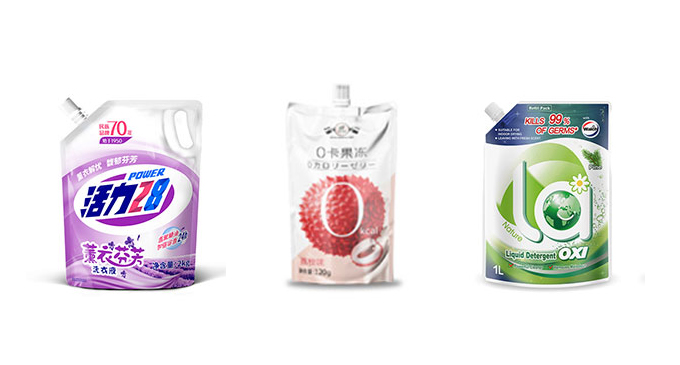In the world of packaging, choosing the right equipment can significantly impact product quality, production efficiency, and even consumer appeal. Doypack packaging machines (also known as stand-up pouch packaging machines) have gained popularity in recent years, but how do they differ from traditional packaging equipment like vertical form-fill-seal (VFFS) machines or pre-made pouch machines?
The most obvious difference lies in the final shape of the package:
• Traditional Packaging Equipment (e.g., VFFS machines):
These machines typically produce flat pouches or bags that lie horizontally on shelves. For example, think of a standard bag of chips that lies flat until you open it. Traditional machines form the pouch from a roll of film, fill it with product, and seal it—resulting in a package that can’t stand upright on its own.
• Doypack Packaging Machines:
These machines create stand-up pouches with a flat base, allowing the package to stand vertically on store shelves. Imagine a pouch of coffee or pet food that stands tall next to other products. Doypack packaging machines add a gusseted bottom (folded sides) or a flat base seal to give the pouch stability, making it more visible and convenient for consumers.
The internal design of the machines reflects their packaging goals:
| Feature | Traditional Packaging Equipment | Doypack Packaging Machines |
|---|---|---|
| Sealing Mechanism | Single or double horizontal seals | Multiple seals (top, bottom, side gussets) |
| Pouch Formation | Simple tube-shaped film | Complex folding for gussets or flat bases |
| Material Handling | Basic film tension control | Advanced servo motors for precise folding |
| Additional Features | Rarely includes handles or zippers | Often adds hang holes, re-sealable zips |
Doypack packaging machines are designed to meet evolving consumer demands, while traditional equipment focuses on basic functionality:
• Traditional Packaging Equipment:
Best for low-cost, high-volume products that don’t require special features. For example, they’re ideal for packaging rice, flour, or small snacks where the goal is speed and
• Doypack Packaging Machines:
Excel at premium and functional packaging:
Re-sealable zippers: Keep snacks fresh after opening.
Spouts or nozzles: For liquids like juice or detergent.
Transparent windows: Let consumers see the product inside (common in coffee or granola pouches).

While traditional machines are often faster for simple tasks, doypack packaging machines offer precision for complex designs:
• Traditional Packaging Equipment:
Can produce 100+ pouches per minute for basic flat bags, making them ideal for bulk production of items like candy or nuts.
• Doypack Packaging Machines:
Typically produce 30–60 pouches per minute due to the extra steps needed to form gussets, add zippers, or create stable bases. However, they use servo motors and digital controls to ensure each pouch is perfectly shaped and sealed, reducing errors.
The initial investment and upkeep differ based on complexity:
| Aspect | Traditional Packaging Equipment | Doypack Packaging Machines |
|---|---|---|
| Initial Cost | Lower ($20,000–$50,000 for basic models) | Higher ($50,000–$150,000 for advanced models) |
| Maintenance | Simple (few moving parts) | More complex (requires regular cleaning of seals and zippers) |
| Material Waste | Higher (less precise film handling) | Lower (advanced tension control reduces scraps) |
Doypack packaging machines are adapting to eco-friendly demands:
• Traditional Packaging Equipment:
Often uses single-layer plastic film, which is cheaper but less recyclable.
• Doypack Packaging Machines:
Can handle recyclable or biodegradable films, such as plant-based polymers or compostable materials. Some models even allow for thinner film usage, reducing material waste by up to 30%.
• Choose traditional packaging equipment if you need:
Simple, low-cost packaging.
High speed for non-premium products.
Minimal maintenance.
• Choose a doypack packaging machine if you need:
Stand-up pouches for shelf appeal.
Features like zippers, spouts, or windows.
Sustainability and precision for premium items.
In short, doypack packaging machines are like the “Swiss Army knives” of packaging—versatile and designed for modern needs—while traditional equipment is the reliable “workhorse” for basic, high-volume tasks. By understanding these differences, you can choose the right tool to make your product shine!